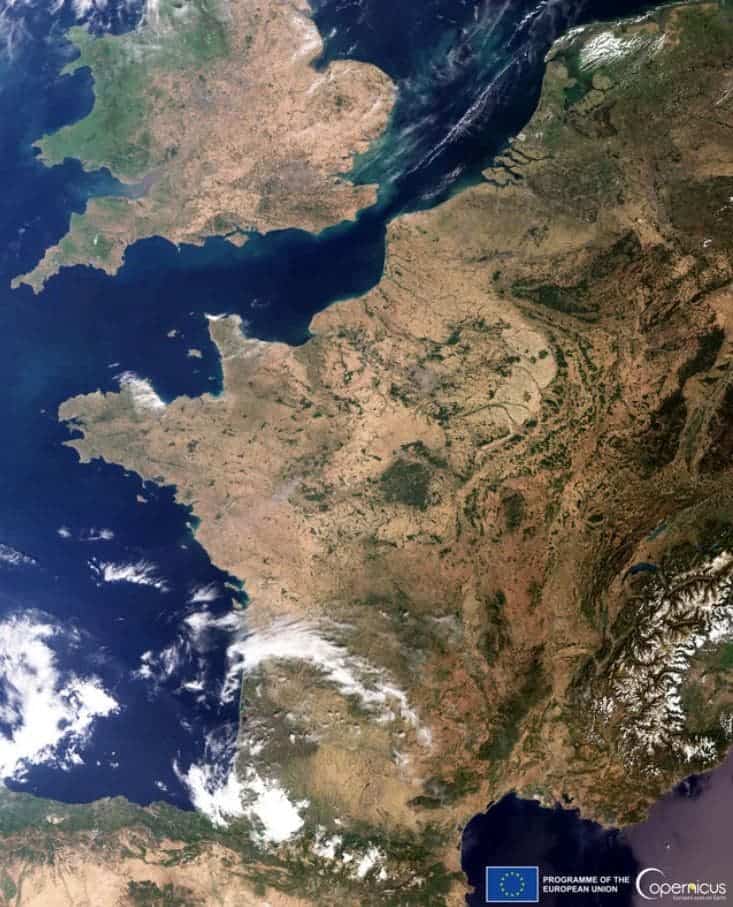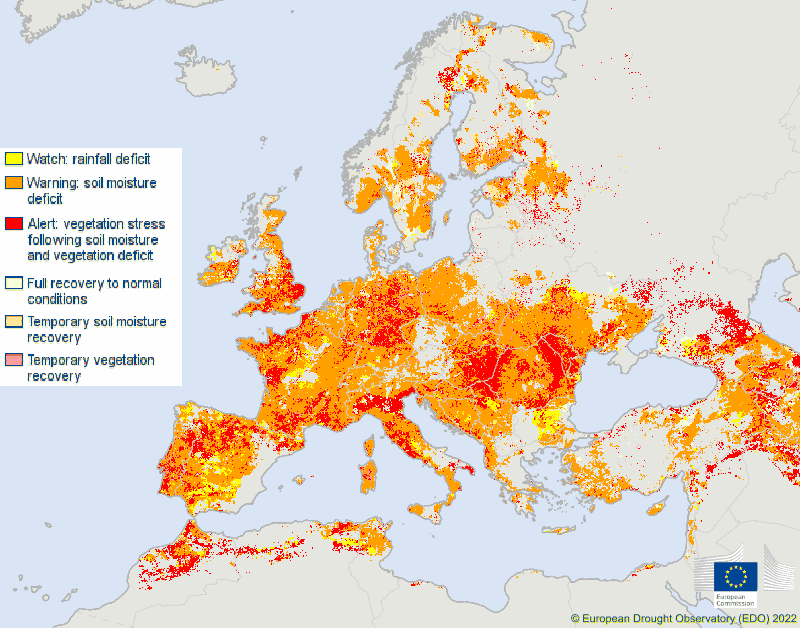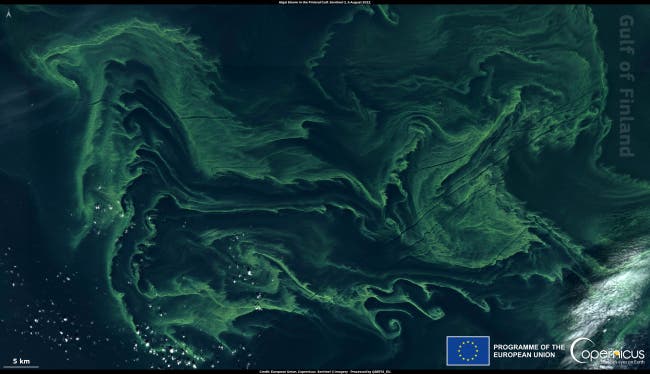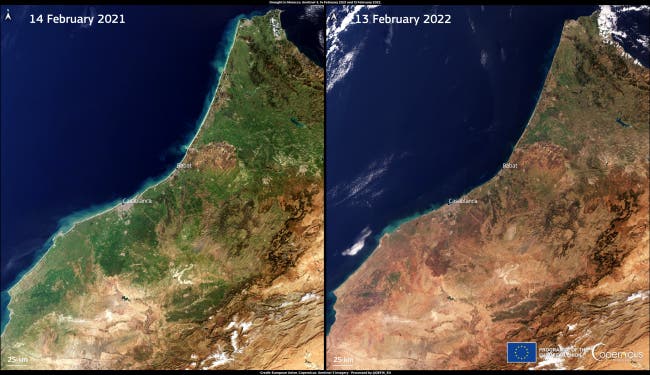Europe is experiencing drought — a drought so extreme that it can be seen both on land, and from space.

The Old World is experiencing one of the most severe bouts of drought it has seen in centuries — five centuries, according to expert estimates. These dramatic conditions, which are most prevalent in the western half of Europe, have led to some very stark developments on ground level: the drying up of rivers, parched and bone-dry grazing meadows, and depleted water reservoirs.
But most strikingly, signs of the drought are visible even from outer space. Large swathes of countries such as England and France are not their customary summer-green, but a worrying ochre, when seen from orbit. The plumes of wildfires can be seen on the German-Czech border, in France, and in areas of the UK. Dry riverbeds flank some of the largest rivers on the continent.
Dry from above
“A staggering portion of Europe is currently exposed to warning and alert drought levels, associated with either soil moisture deficit or its combination with vegetation stress. Compared to previous months drought hazard has been increasing especially in: France, Romania and neighboring regions, western Germany, and several Mediterranean regions (central and southern Italy, southern Greece, Croatia, Bosnia Herzegovina, and the Iberian Peninsula)”.
“Regions already affected by drought in spring […] are still under similar or worse conditions.”
European Drought Observatory, July 2022 Report.

The report goes on to explain that the drought is expanding geographically and increasing in severity. The situation is fueled by a persistent lack of precipitation and the lingering effects of the heatwaves which gripped the continent in May and June.
Rivers around Europe are seeing reduced discharge, and water stores are depleting. Although domestic water security is not yet meaningfully impacted, energy generation and the agricultural sector are under duress.
Both hydroelectric plants and other types of power plants are struggling to operate due to the reduced flow of water — the former as there isn’t enough water to rotate their turbines, and the latter due to a lack of water for cooling and as raw material for steam, which is used by their own turbines.
Farmers are increasingly forced to compete for dwindling resources. Such competition also began earlier than usual in the year, the report notes

Late spring and early summer months in 2022 have been characterized by “anomalous anticyclonic conditions” throughout western and central Europe. Both low- and high-pressure anomalies here are part of a global pattern that affect other regions in Asia and North America.

Such conditions are leaving behind large volumes of parched, tinder-dry vegetaition. In concert with the higher-than-usual summer heat, these areas pose a very fertile backdrop for wildfires, which have been raging in several spots across the peninsula — even those that are not accustomed to seeing such events.
The United States has also been struggling with unprecedented heatwaves, wildfires, and drought that began last year. Important water reservoirs that serve huge populations and agricultural centers are dangerously close to running dry. Given the severity of this drought on the global scale, one question inevitably comes to the forefront: “is climate change making it worse?”
The answer, according to NASA, is yes.
“Human activities emit carbon dioxide and other greenhouse gases that warm the planet. A warmer planet is a thirstier planet, because warmer air drives more evaporation of water vapor from the surface,” explained Kate Marvel, a research scientist at NASA GISS, in an article published late last year. “If we continue emitting greenhouse gases, this trend is likely to continue. NASA’s climate models and others show that – under high emission scenarios – droughts could become much worse across the U.S. and globally. Drought-prone areas could enter persistent megadroughts, precipitation patterns and snowmelt could change drastically, the risk of dry soils could increase in many areas and some places could see more frequent and severe wildfires,” it adds.

The agency explains that, while climate science can show us that the world will continue to become hotter and drier in the future and that droughts are likely to increase in frequency and severity, they cannot “pinpoint exactly when and where droughts will occur in the future or predict how severe their impacts will be”. The only surefire way to avoid such events in the long-term is to drastically reduce our greenhouse gas emissions in order to help stabilize the climate.
But the current drought seems to be more indicative of what’s in store in the short term. It is in large part an effect of man-made greenhouse gas emissions altering large-scale atmospheric patterns that form the basis of local climate as we know them. Europe is a telling example of how quickly environmental conditions can change when these patterns are disrupted, and the flow of air masses and the water vapor they carry is altered.
For now, Europe is looking hopefully for rain clouds on the horizon, as is the US. Hopefully, we won’t have to wait long.






